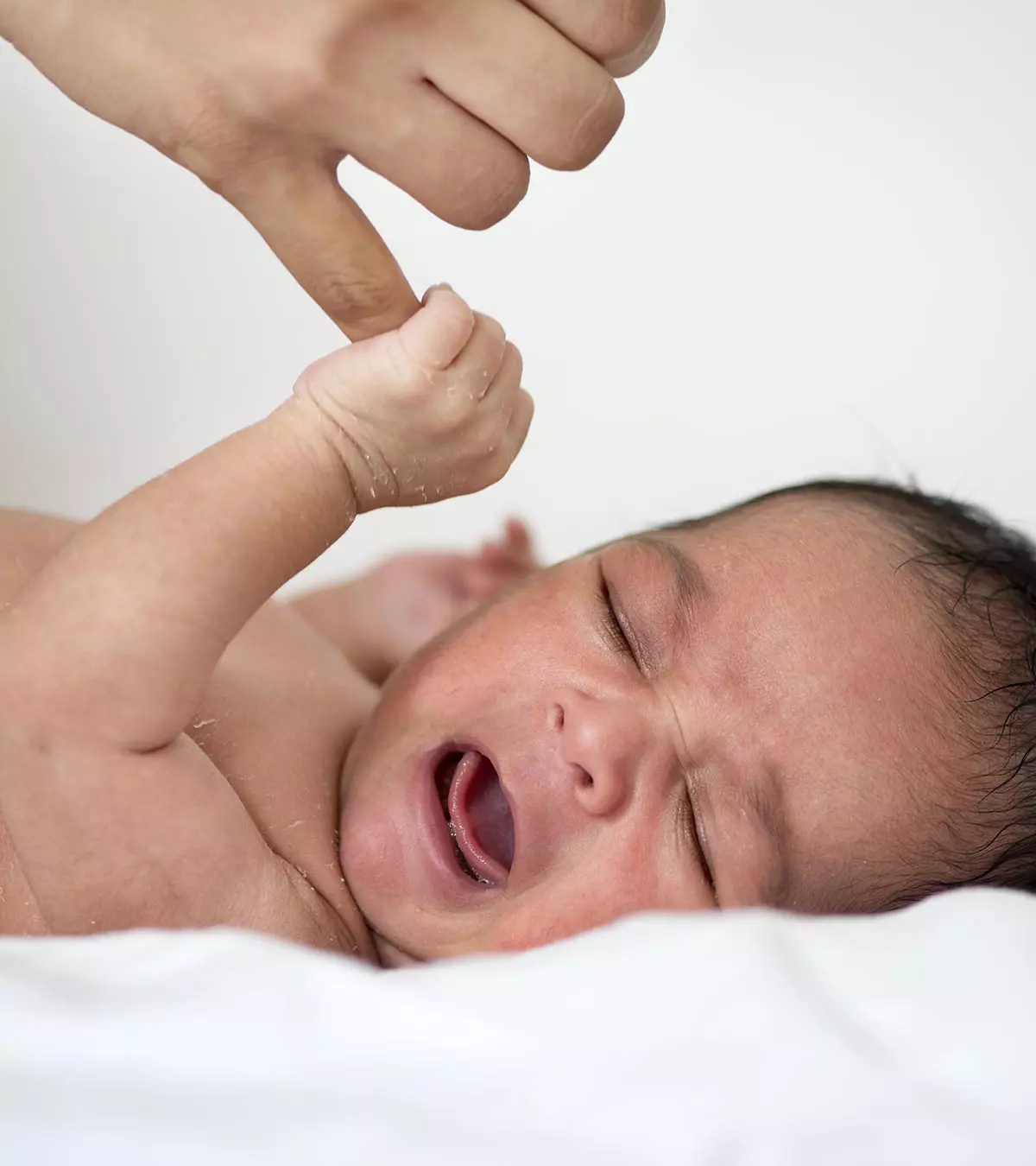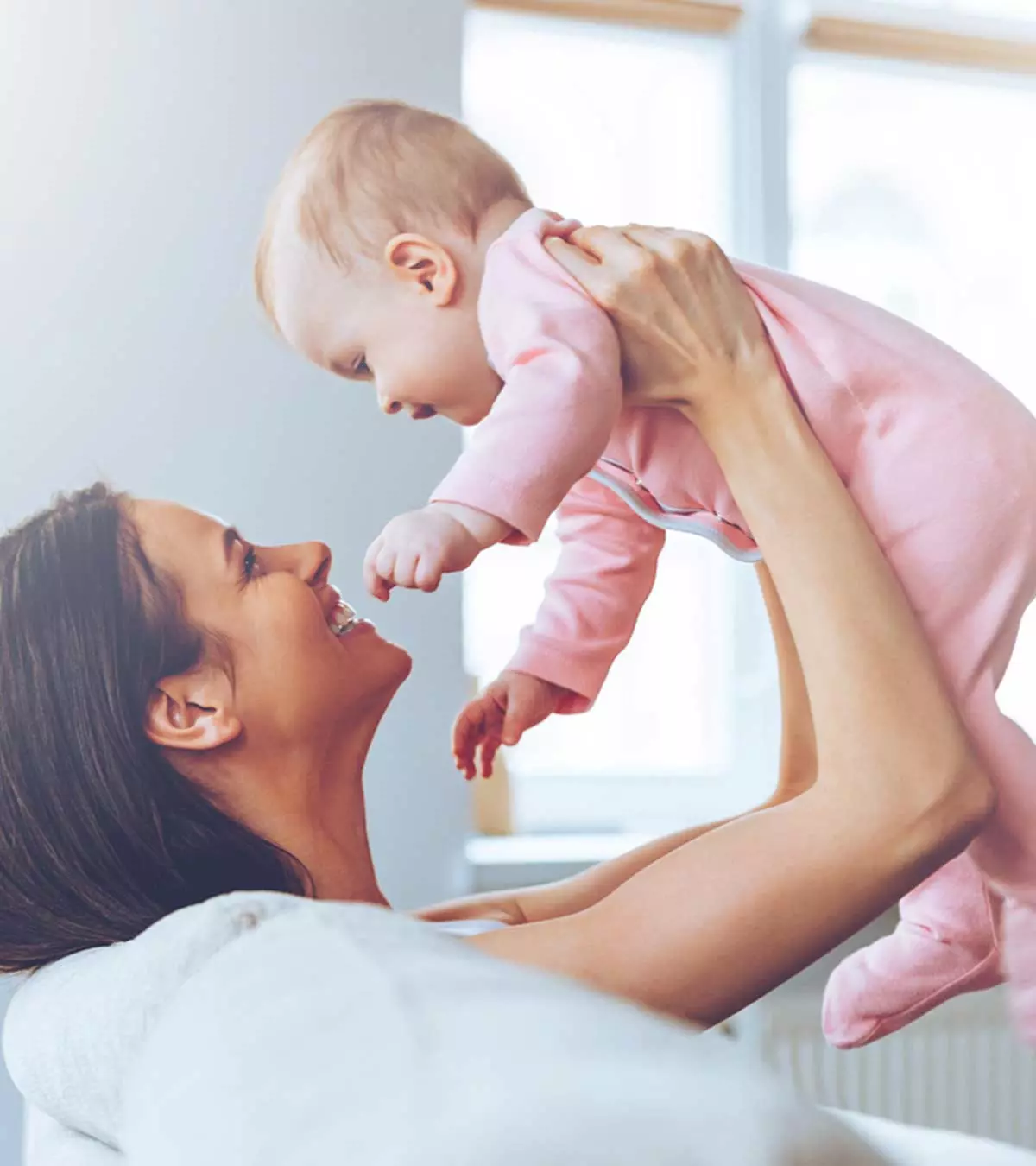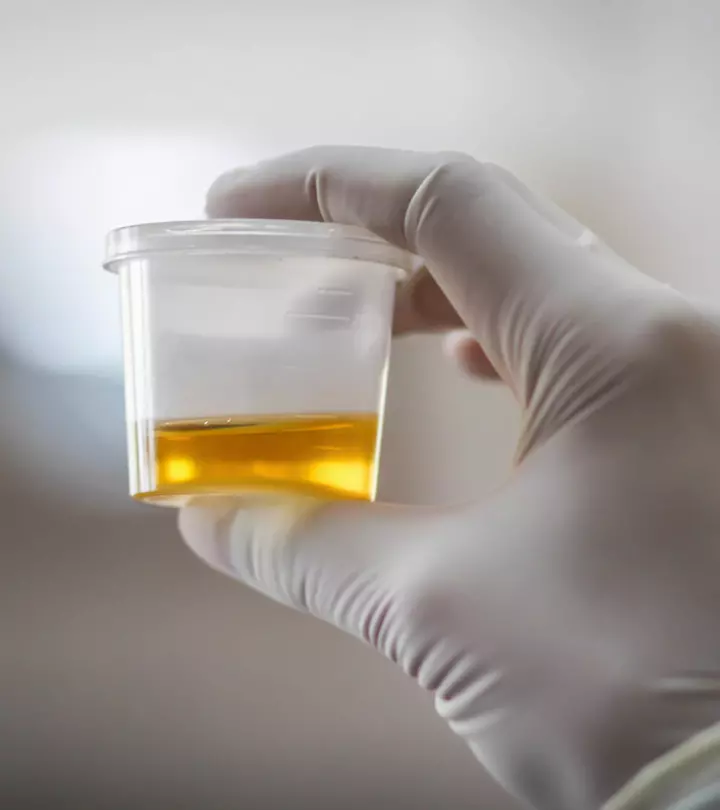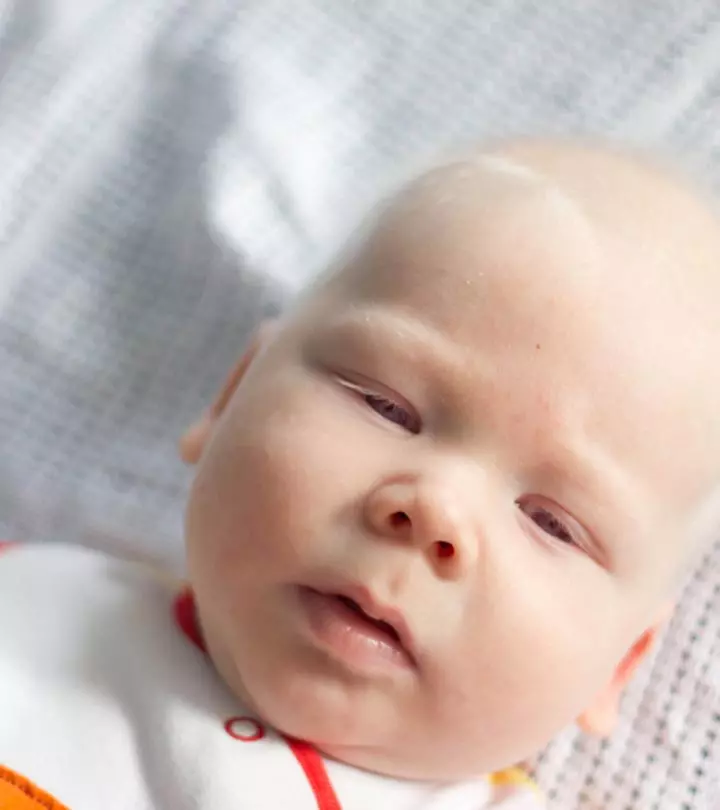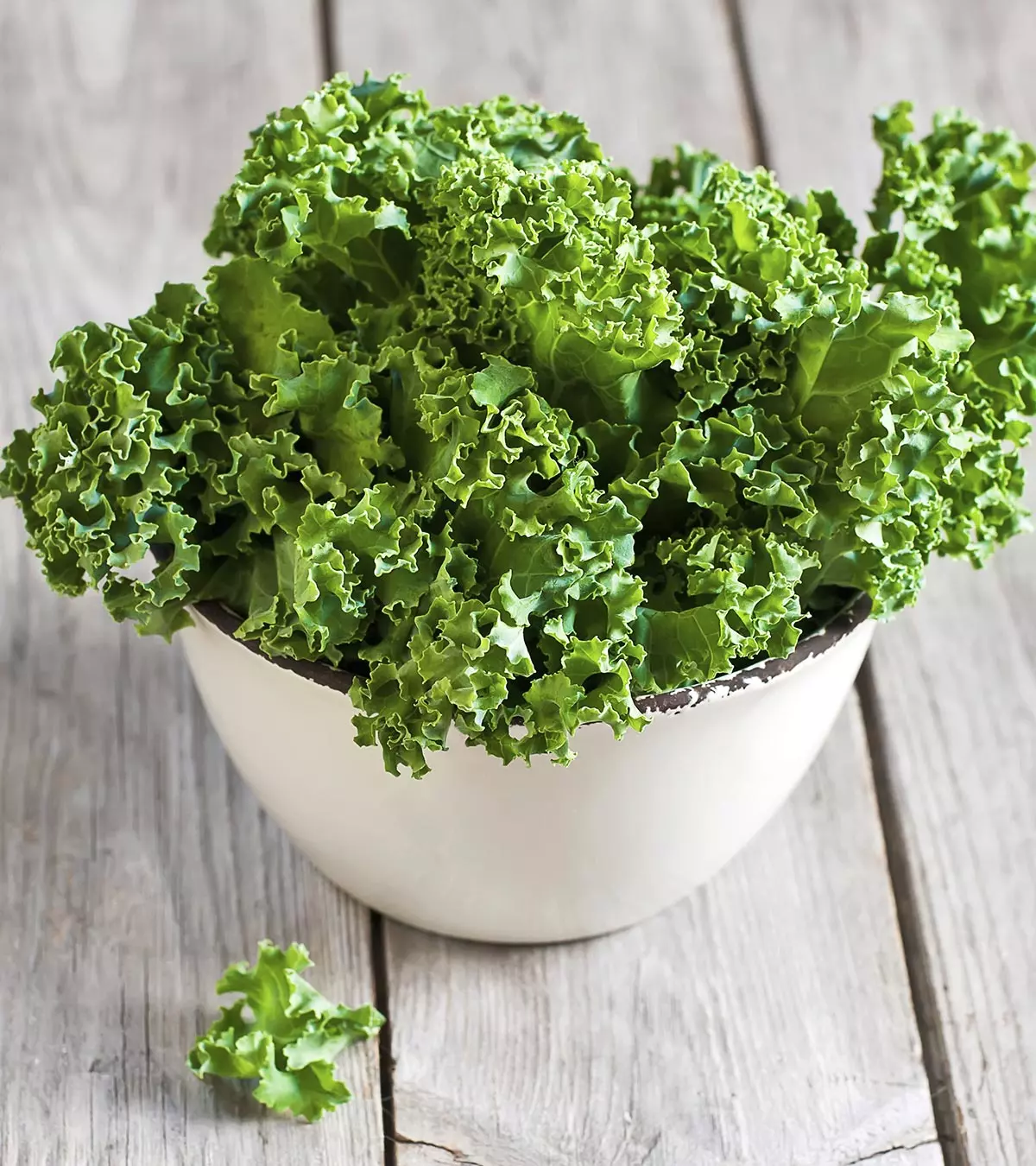
Image: Shutterstock
Every baby is adorable and unique, as is their hair, whether straight, wavy, or curly. Each baby’s hair growth pattern could be different. Some newborns are born with a full head of hair, while others are born with only a few wisps. It’s normal for babies to have less hair for the first six months, so it should not be a cause for concern. Genes mostly determine your baby’s hair and skin color and, to a certain extent, their hair growth pattern. However, a nutritious diet and basic hair care routine can promote hair growth. This post discusses tips for keeping your baby’s hair silky and healthy while also helping it grow. However, remember that the advice in this post may only aid in giving your baby’s hair the boost it needs to grow to its full potential since the length and thickness of hair depend on various factors.

Key Pointers
- Babies normally lose hair during the first six months of life because of the development of mature hair follicles.
- If babies lose a lot of hair after six months, consult a doctor, as it may be a sign of infection.
- Support your baby’s hair growth by giving them nutritious food rich in zinc, proteins, and vitamins and massaging their scalp with coconut oil.
- Regular shampooing, brushing the hair, and some other useful hair growth tips for babies as you scroll down.
Why Do Babies Shed Hair?

It is common for babies to lose hair during the first six months, as the baby’s hair falls off to make way for mature hair follicles. They also lose their hair when the scalp gets rubbed against the mattress or due to head-banging behavior — hair loss due to these factors usually gets corrected on its own. According to the American Academy of Pediatrics, it’s normal for all babies to lose hair in the first few months after birth. However, the hair grows back as the baby grows. However, consult a pediatrician if your baby is older than six months, is shedding a significant amount of hair, or has signs of infection on the scalp (1).
 Be watchful
Be watchfulTo know more about why babies lose their hair, read an informative article here.
Ways To Support Your Baby’s Hair Growth
1. Give them nutritious food
While hair growth is largely based on genetics, nourishment and hygiene play an important role.
Give them nutritious food rich in zinc, proteins, and vitamins A, B, and D, as these can help promote hair growth.
If your infant is six months old and has started consuming solids, include the following foods in their diet in a soft, well-mashed manner.
- Vitamin A-rich foods such as ripe mangoes, oranges, sweet potatoes, squash, and carrots
- Dark, leafy green vegetables, broccoli, and turnip
- Small quantities of egg and cheese
- Beans, meat, and whole grains (2)
2. Give them a hair oil massage
Mineral oils play an important role in protecting hair, as these oils can penetrate the hair and reduce the amount of water absorbed by the hair (which might damage the hair). Applying oil on a regular basis can help with the natural distribution of oils along the shaft and prevent hair breakage.
Studies suggest that coconut oil massage helps reduce protein loss from the hair, which might help promote hair growth (3).
To reduce hair loss and promote thick and fuller hair, massage your baby’s or toddler’s scalp with coconut oil a few times a week. This will not only prevent the scalp from getting dry, but also help eliminate cradle capiA harmless skin condition marked by the appearance of scaly patches on a baby’s scalp .
Apply a few drops of organic or extra-virgin coconut oil on your baby’s scalp and massage it. Leave it for 15–20 minutes and rinse with warm water.
 Did you know?
Did you know?3. Apply olive oil
Olive oil has also been one of the preferred oil choices for hair massage as it provides several benefits, such as strong hair, increased hair elasticity, and scalp nourishment due to its moisturizing properties (4). Therefore, you can also use olive oil for baby’s hair growth. Olive oil can also be used to treat cradle caps in newborns. Use a tiny amount of pure organic olive oil and rub gently on your baby’s scalp. After 15 minutes, comb out the flakes and wash the scalp with a mild shampoo. However, ensure not to leave any olive oil on the baby’s scalp for a longer time as it can block the pores (5).
 Experts say
Experts say4. Shampoo their hair regularly
It is important to shampoo your baby’s hair twice a week to remove the excess oil. If your baby has a cradle cap, it is advisable to apply an emollient, such as white petroleum, mineral oil, or baby oil, before shampooing the hair (6).
Apply baby shampoo on the scalp and gently massage. Leave it for 5–10 minutes, and rinse with lukewarm water. This might help remove dirt and excess oil that might be blocking the hair follicles, thus promoting hair growth. Use a gentle touch when applying shampoo and avoid scrubbing, as this can harm delicate hair follicles.
5. Brush the scalp
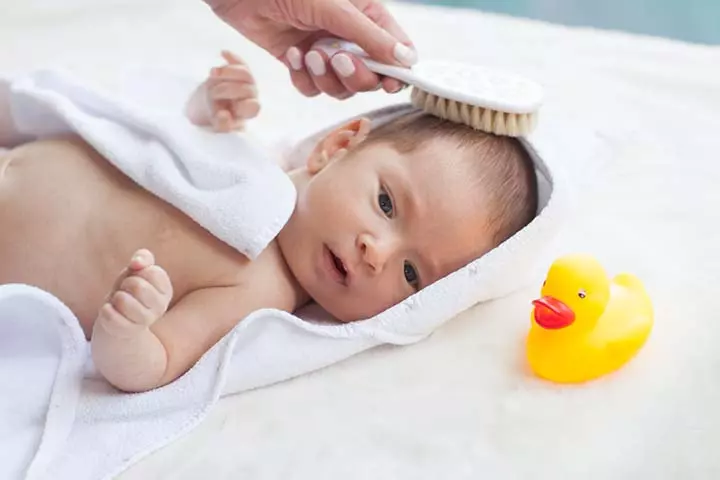
Hair or no hair, you need to incorporate grooming into your baby’s routine and brush your baby’s scalp regularly with a brush that has soft bristles. Anecdotal evidence suggests that gently combing, brushing, or massaging your baby’s scalp might stimulate hair growth.
It might also help remove dead cells and improve blood circulation in the scalp. Brushing is also a way to relax your baby; you might even find them sleeping away midway.
Brush your baby’s hair for 5–10 minutes every day; you can also use your fingers to massage the scalp gently.
 Point to consider
Point to consider6. Use hair conditioner
A conditioner is usually applied to the hair after shampooing. It helps in moisturizing the hair and replacing the oils stripped away by the shampoo. It may also protect, strengthen, and reduce the breakage of hair.
Using a conditioner is important if your baby has curly or wavy hair, which is prone to dryness. Choose a kid-friendly, natural, and tear-free conditioner. Apply it all over the scalp after shampooing and rinse off with warm water. You can also apply mineral oil to the hair after shampoo.
7. Handle it gently

It is important to prevent unnecessary hair breakage. Your baby’s hair is gentle and tender, so handle it with utmost care while shampooing or brushing. Use a soft towel to pat the baby’s wet hair after shampooing.
You can either use your fingers or a soft brush to untangle the knots, as these knots can break off, causing hair loss. Never rub your baby’s hair with hard towels or detangle hair roughly, as it might damage the gentle hair follicles and slow down hair growth.
8. Apply aloe vera gel
Aloe vera is known for its benefits on skin and hair. It contains an enzyme that promotes hair growth (7). You can either use fresh aloe vera gel or a product containing aloe vera gel on your baby’s scalp.
Apply aloe vera juice directly on your baby’s scalp, let it settle for ten minutes, and rinse off with lukewarm water.
Ensure the aloe vera gel does not get into your baby’s eyes or mouth. You could also do a patch test to determine if your baby is allergic to aloe vera before applying it on the scalp for the first time.
Amaka Okonkwo, a doting mother and vlogger, shares a natural remedy she used to support her baby’s hair growth. She says, “Put pieces of aloe vera skin or rind, coconut oil, and shea butter in a pot or pan and cook it for five minutes. Once the concoction is ready and thoroughly cooled down, transfer it to a bottle and store it in a cool place… After shampooing and drying my baby’s hair, I apply the aloe vera oil and massage her scalp (i).”
9. Do not tie the hair tightly
If your baby’s hair falls onto their face, or if they have curly hair, it could be quite a task to keep it in place. This might tempt you to tie their hair tightly into a pony or a bun. However, tying your baby’s hair tightly might damage their hair and cause hair loss.
The key here is to treat the hair gently and, at the same time, keep it away from the face. Applying oil or a conditioner might help tame the curls and keep the hair in order. You can also use a silk headband or a loose hair tie to tie your baby’s hair.
Vlogger and mother Kessy G reveals an easy trick that helped her infant’s hair loss, “My baby was two months old, and he was losing hair at the back of his head because we were laying him on blankets and pillows, which caused friction and rubbed out his hair. I figured out what to do. I had purchased a silk satin scarf before I had him but never used it. I washed it and placed it on the seat he was on. The scarf is about the same size as a receiving blanket, so it’s roughly large. I placed it on all his seats, and there was no more friction, and no more hair loss (ii).”
10. Choose the right hair products

Using the right hair products plays a key role in promoting hair growth in babies. Adult shampoos and conditioners contain harsh chemicals that can strip off the natural oils and damage your child’s delicate hair.
Always pick products designed for babies, and read the labels to understand the ingredients and determine if the product is safe for your baby. Seek medical advice on baby-safe haircare products if you are unsure about which ones to use for your baby.
11. Offer weather protection
Just like adult hair, your baby’s hair would also get damaged when exposed to pollution and sunlight. Keep your baby’s scalp covered when going out to minimize exposure to harsh weather conditions. In colder weather, a soft hat can help keep your baby’s scalp warm and prevent dryness or irritation.
12. Trim or shave at regular intervals
“Should I trim my baby’s hair or shave the head?”
This is a question most parents have. In some cultures, a baby’s first haircut is performed as a ritualistic practice. It is commonly believed that shaving a newborn’s head will result in thicker and fuller hair.
If you choose to shave your baby’s head, it is best to get it done by an expert who can shave it without hurting the baby’s gentle scalp. Alternatively, if your baby has uneven hair or bald spots, you can trim the hair to allow the hair to grow evenly.
Frequently Asked Questions
1. Why does my baby have such little hair?
It is common for babies to be born with and have very little hair for the first few months. Hair growth begins a few months after babies are born. If you have a family history of hair growth issues such as baldness or alopeciaiA condition that causes hair loss in circular patches , discuss your apprehensions with your baby’s pediatrician (8).
2. Can I predict if my baby will have a lot of hair?
It is impossible to know if your baby will have a lot of hair or lesser hair.
3. Would cutting my baby’s hair make it grow faster?
Contrary to popular belief, cutting a baby’s hair or shaving their head may not improve the quality and quantity of their hair. Hair growth, color, and texture depend on many factors such as genetics, nutrition, and overall health.
4. What month does a baby grow hair in the womb?
At five months (22 weeks), the baby’s body is covered in soft, fine hair called lanugo. Your baby’s scalp would also be sprouting hair at this time (9).
5. Why is my baby’s hair not growing?
It can usually take two to three years for a baby’s hair to grow completely; however, the baby may have nutrient deficiencies, metabolic disordersiConditions that affect the body’s ability to use energy for proper function , or other syndromal conditions that interfere with hair growth. Take a doctor’s advice in such situations (8).
Most hair loss happens during the first six months of life, and hair regrowth happens at about the same time due to the development of mature hair follicles. So consult a doctor if it continues even after six months. You can support your baby’s hair growth by following basics like giving them nutritious foods rich in zinc, proteins, and vitamins, massaging their scalp with coconut oil, regular shampooing, and offering weather protection by trimming. Baby’s hair is gentle and tender, so it is important to handle it with the utmost care, and you should choose the right products for baby hair growth. However, it is natural for babies to lose hair in the first six months, so do not panic if you see bald spots as the hair will regrow.
Infographic: Factors That Influence Baby’s Hair Growth
Some babies may have scant hair, while others are born with a thick set of hair on the scalp. If you are wondering what factors could be responsible for a baby’s hair quantity and quality, explore this infographic to learn more on this subject.
Some thing wrong with infographic shortcode. please verify shortcode syntax
Illustration: Effective And Healthy Tips For Baby&rsquos Hair Growth

Image: Stable Diffusion/MomJunction Design Team
Learn about what might cause your baby’s thin hair, how to promote hair growth and other expert tips on this subject from an expert, in this video.
Personal Experience: Sources
MomJunction articles include first-hand experiences to provide you with better insights through real-life narratives. Here are the sources of personal accounts referenced in this article.
i. How to regrow your baby’s bald hair fast using this natural remedies;https://www.youtube.com/watch?feature=shared&v=ub9lDiT0cWQ
ii. How To Prevent Newborn Hair Loss In 1 Easy Step;
https://www.youtube.com/watch?v=AwRAI_RCqdk
References
1. Hair Loss (Alopecia); American Academy of Pediatrics
2. Healthy Eating for Babies Age 6-12 Months; A Guide for Parents and Caregivers; Government of Newfoundland and Labrador
3. Maria Fernanda Reis Gavazzoni Dias; Hair Cosmetics: An Overview; International Journal of Trichology (2015).
4. The Benefits of Olive Oil For Hair Regrowth; Evergreen Beauty College
5. Cradle Cap Symptoms and Natural Treatments; American Pregnancy Association
6. Timothy Nobles, Seneca Harberger, and Karthik Krishnamurthy; Cradle Cap; StatsPearls (2025).
7. K. P. Sampath Kumar, et al.; Aloe vera: A Potential Herb and its Medicinal Importance; Journal of Chemical and Pharmaceutical Research (2010).
8. My baby has little hair, is it due to a lack of calcium?; Family Health Service; The Government of the Hong Kong Special Administrative Region
9. 22 weeks pregnant; Intermountain Healthcare
10. Hair Loss;Seattle Children’s Hospital.
11. Effect of mineral oil, sunflower oil, and coconut oil on prevention and hair damage;National Library of Medicine.
12. How to treat cradle cap;American Academy of Dermatology Association
13. Assaf Monselise et al.,What Ages Hair?;(2017); National Library of Medicine.
Community Experiences
Join the conversation and become a part of our nurturing community! Share your stories, experiences, and insights to connect with fellow parents.
Read full bio of Pranjul Tandon
Read full bio of Rohit Garoo
Read full bio of Dr. Ritika Shah
Read full bio of Ghazia Shah






